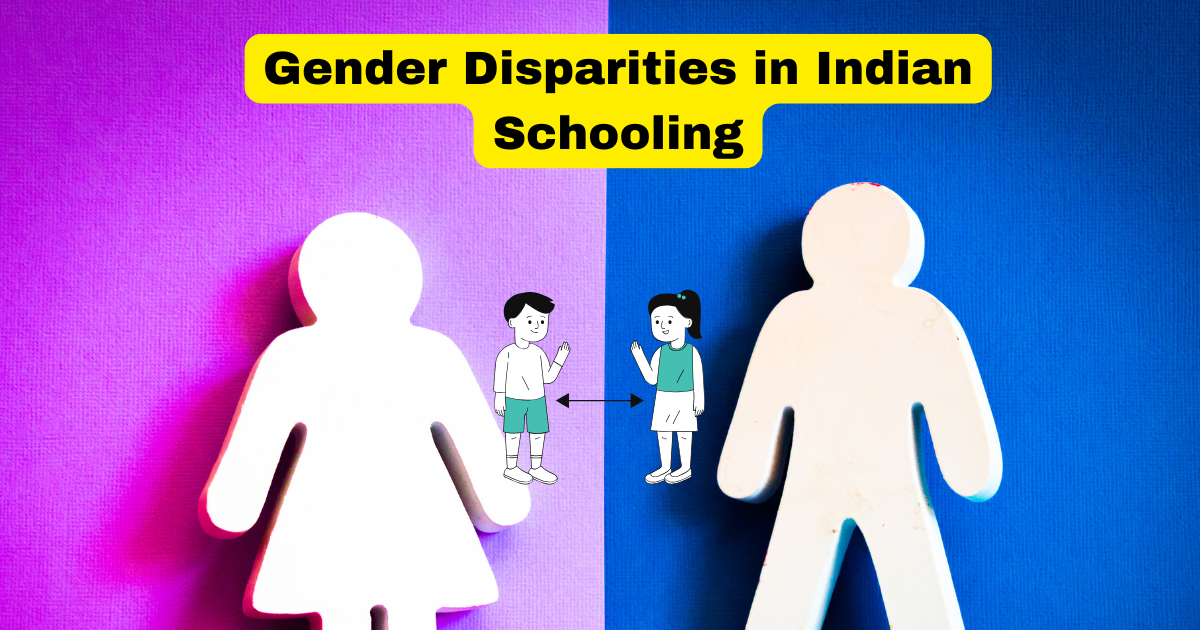Gender Disparities in Indian Schooling: Barriers and Solutions: improving School Infrastructure, According to the 2011 census, only 63 per cent of women in the total population are literate significantly lower than the male literacy rate of 80 %. India lags behind the global average of 83 % with a national literacy rate of only 74 %.
Gender Disparities in Indian Schooling
Gender Disparities in Indian Schooling In the latest Global Gender Gap Report released by the World Economic Forum (WEF) for 2024, India has been ranked 129th out of 146 economies. This drop in ranking reflects a notable decline in gender equality, particularly in the education sector.
As efforts are made to narrow the gender gap, challenges such as unequal enrolment rates, disparities in literacy levels, and barriers to higher education persist, impacting the overall development and empowerment of women in Indian society.

In Short-
- There is a 17 per cent literacy rate gap between males and females.
- Women in rural areas are still facing broad discrimination
- Women`s participation is lowest in the science stream
“You teach a man, you educate him. You educate a woman, you educate a generation,” said Brigham Young. This wisdom resonates deeply in the context of India, where addressing the root causes of the gender gap and women`s education are important for societal progress. According to the 2011 census, only 63 per cent of women in the total population are literate, significantly lower than the male literacy rate of 80 %.
According to data collected by the Indian Ministry of Education, two primary systems are used: the Unified District Information System for Education and the All Indian Survey on Higher Education.
What is Gender Disparities in Education
Gender Disparities in education refer to the disparities in educational opportunities between children, primarily due to the cultural, social, and economic factors. This gender bias in education is one of the biggest reasons why girls have less access to schooling.
Due to these limitations, girls are denied access to important skills, knowledge and future opportunities. Education is important for creating a balanced society where every child can grow, learn and achieve without limitations set by gender.
Current Status of Gender Disparities Indian schooling
India has made progress in reducing gender discrimination in education, yet significant gaps persist. As girls move to higger education levels, they are less likely;y to remain in school, with enrollment rates dropping significantly in secondary school.
while government initiatives like Beti Bachao, Beti Padhao aim to improve these statistics ongoing support is required to create a more equitable environment.
Key Factors Behind Gender Disparities
Cultural and Social Barriers
Cultural norms and traditional beliefs contribute to gender bias in education in many communities, girls are expected to focus on household responsibilities or marry early.
These societal expectations often undervalue formal education, restricting opportunities for girls. It addresses these cultural perceptions and encourages families to support the school.
Economical Barriers
Economical constraints are another critical factor behind gender disparity in education, low-income families may invest less in girl’s education believing it to be less valuable for future earnings potential. Scholarships and financial support programs can ease this burden, encouraging families to prioritize education for all children.
Infrastructure Challenges in Schools
Inadequate facilities can further discourage girls from attending school regularly. The lack of separate sanitation facilities insufficient classroom resources and long travel distances can create a discouraging environment for girls.
Solutions
- Community Awareness and Engagement- Raising community awareness is a pivotal strategy in reducing gender bias in education when communities understand the long-term benefits of educating girls. They are more likely to support schooling for all children.
- Economical Incentives for Families- Financial incentives can help reduce gender discrimination in education by supporting families in enrolling children in school. Economical support programs like scholarships encourage parents to educate all children equally.
- Improving School Infrastructure- Improving school facilities makes them more accessible for all children, which helps ensure regular attendance and creates a supportive learning setting.
- Combating Early Marriage and child labour
- Integrating Technology in Education– Technology has the power to make educational gaps caused by gender inequality.
- Building Public-Private Partnerships
Conclusion
In this article, we discussed Gender Disparities in Indian Schooling: Barriers and Solutions: improving School Infrastructure, Gender Disparities in education refer to the disparities in educational opportunities between children, primarily due to the cultural, social, and economic factors.
